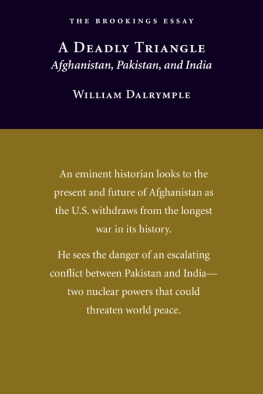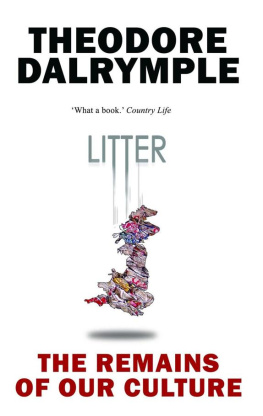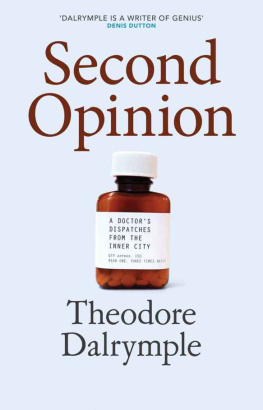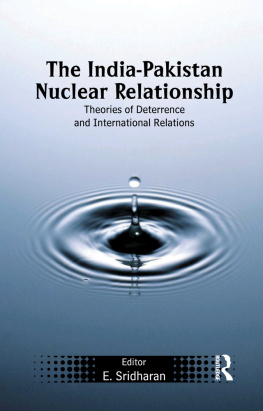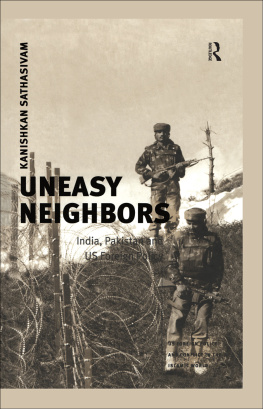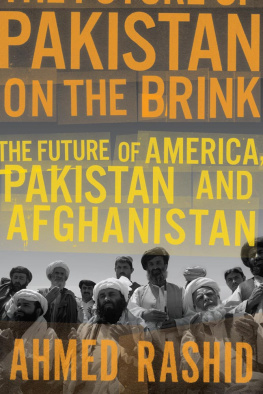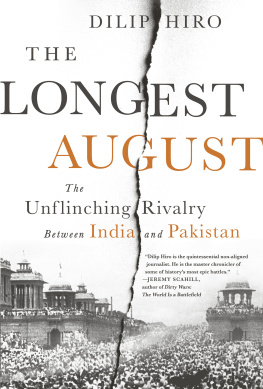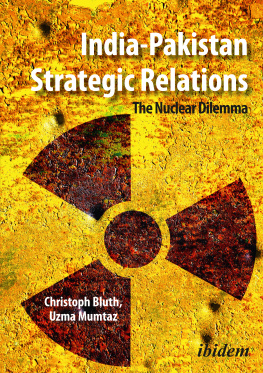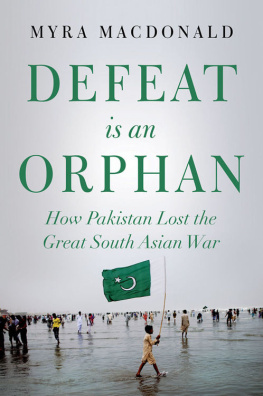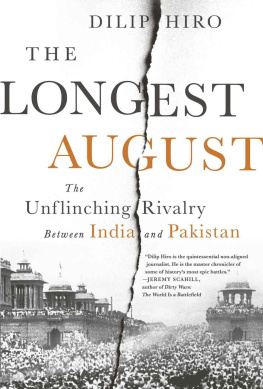WILLIAM DALRYMPLE is the author of nine books about India and the Islamic world, including award-winning titles such as City of Djinns ; White Mughals; The Last Mughal; and Nine Lives: In Search of the Sacred in Modern India . He recently curated a major show of Mughal art for the Asia Society in New York. His new book, Return of a King: The Battle for Afghanistan 1839-42 was published to acclaim by Knopf in February. He writes regularly for the New Yorker, the New York Review of Books and the Guardian, and is one of the founders and a co-director of the Jaipur Literary Festival. He has honorary doctorates of letters from the universities of St Andrews, Aberdeen, Bradford and Lucknow, and in September took up a visiting fellowship at Princeton. Learn more about Dalrymple and his work at http://www.williamdalrymple.uk.com/
The Sole Survivor
At six o'clock in the morning of February 26, 2010, Major Mitali Madhumita was awakened by the ringing of her mobile phone. Mitali, a 35-year-old Indian army officer from Orissa, had been in Kabul less than a year. Fluent in Dari, the most widely spoken language in Afghanistan, she was there to teach English to the first women officer cadets to be recruited to the Afghan National Army.
It was a sensitive posting, not so much because of gender issues as political ones: India's regional rival, Pakistan, was extremely touchy about India providing military assistance to the government in Afghanistan and had made it very clear that it regarded the presence of any Indian troops or military trainers there as an unacceptable provocation. For this reason everyone on the small Indian army English Language Training Team, including Mitali, and all the Indian army doctors and nurses staffing the new Indira Gandhi Kabul Children's Hospital, had been sent to Afghanistan unarmed, and in civilian dress. They were being put up not in an army barracks, or at the Indian Embassy, but in a series of small, discreet guest houses dotted around the city's diplomatic quarter.
The phone call was from a girlfriend of Mitali's who worked for Air India at Kabul airport. Breathless, she said she had just heard that two of the Indian guest houses, the Park and the Hamid, were under attack by militants. As the only woman on her team, Mitali had been staying in separate lodgings about two miles away from the rest of her colleagues, who were all in the Hamid. Within seconds, Mitali was pulling on her clothes, along with the hijab she was required to wear, and running, alone and unarmed, through the empty morning streets of Kabul toward the Hamid.
I just thought they might need my help, she told me recently in New Delhi.
As she dashed past the Indian Embassy, Mitali was recognized by one of the guards from diplomatic security who shouted to her to stop. The area around the guest houses was mayhem, he told her. She should not go on alone. She must return immediately to her lodgings and stay there.
I don't require your permission to rescue my colleagues, Mitali shouted back, and kept on running. When she passed the presidential compound, she was stopped again, this time at gunpoint, by an Afghan army security check post. Five minutes later she had charmed one of the guards into giving her a lift in his jeep. Soon they could hear bursts of automatic weapons, single shots from rifles and loud grenade blasts.
I was the only one of my team who came back alive.
As we neared the area under attack I jumped out of the jeep and ran straight into the ruins of what had been the Hamid guesthouse. It was first light, but because of all the dust and smoke, visibility was very low and it was difficult to see anything. The front portion of the guesthouse was completely destroyedthere was just a huge crater. Everything had been reduced to rubble. A car bomb had rammed the front gate and leveled the front of the compound. Three militants then appeared and began firing at anyone still alive. I just said, Oh my God, and ran inside.
I found my way in the smoke to the area at the back where my colleagues had been staying. Here the walls were standing but it was open to the skythe blast had completely removed the roof, which was lying in chunks all over the floor. There was cross-firing going on all around me, and the militants were throwing Chinese incendiary grenades. Afghan troops had taken up positions at the top of the Park Residence across the road and were firing back. I couldn't see the militants, but they were hiding somewhere around me.
As quietly as I could, I called for my colleagues and went to where their rooms had been, but I couldn't find them anywhere. I searched through the debris and before long started pulling out bodies. A man loomed out of the gloom and I shouted to him to identify himself. But he wasn't a terroristhe was the information officer from our embassy and he began helping me. Together we managed to get several injured people out of the rubble and into safety.
Pakistan made no public comment on the attack, other than to refuse permission for the planes carrying the dead bodies back to India to cross its airspace.
Then we heard a terrible blast. We later learned that Major Jyotin Singh had tackled a suicide bomber, and by holding him from behind had prevented him entering the Park Residence. The bomber was forced to blow himself up outside. Jyotin had saved the lives of all the medical team inside.
But the only one of my colleagues who hadn't been killed on the spot, Major Nitesh Roy, died of his 40% burns in hospital three days later. I was the only one of my team who came back alive.
In all 18 people were killed in the attack that morning, nine of them Indians, and 36 were wounded. Among the dead found beneath the debris was the assistant consul general from the new Indian consulate in Kandahar. This consulate was a particular bugbear of the Pakistanis, who accused it of being a base for RAWthe Research and Analysis Wing, India's external intelligence agency. The Pakistanis believed RAW was funding, arming and encouraging the insurgency in Baluchistan, the province that has been waging a separatist struggle ever since it was incorporated into the new nation of Pakistan in 1947.
It was not difficult to figure out the motive for the attack. The operation was soon traced by both Afghan and U.S. intelligence to a joint mission by the Pakistani-controlled Haqqani network, a Taliban-affiliated insurgent group under the leadership of Jalaluddin Haqqani, and the Pakistan-based anti-Indian militant group Lashkar-e-Taiba (Army of the Righteous), which carried out the November 2008 assault on the Taj Hotel and other targets in Mumbai. Both the Haqqani network and Lashkar-e-Taiba are believed to take orders from the ISIInter-Services Intelligence, which is closely linked to the military.
Pakistan made no public comment on the attack, other than to refuse permission for the planes carrying the dead bodies back to India to cross its airspace.
The Indian-Pakistani Conflict Over Afghanistan
The February 2010 attack on the Indian guest houses was a rare overt act of hostility in the long covert struggle India and Pakistan have been waging on and off for more than sixty years over their competing influence in Afghanistan. But it was not the only such act. In fact it was the third in less than three years.
Fifteen months before, on October 8, 2009, a massive car bomb had been set off outside the Indian embassy in Kabul killing 17 people and wounding 63. Most of the dead were ordinary Afghans caught walking near the target. A few Indian security personnel were wounded, but blast walls built following a much deadlier bombing the previous year which killed 40 and wounded more than 100also thought to have been sponsored by Pakistandeflected the force of the explosion, so that physical damage to the embassy was limited to some of the doors and windows being blown out. In the case of the 2009 attack, American officials went public with details from phone intercepts which they said revealed the involvement of the ISI.

